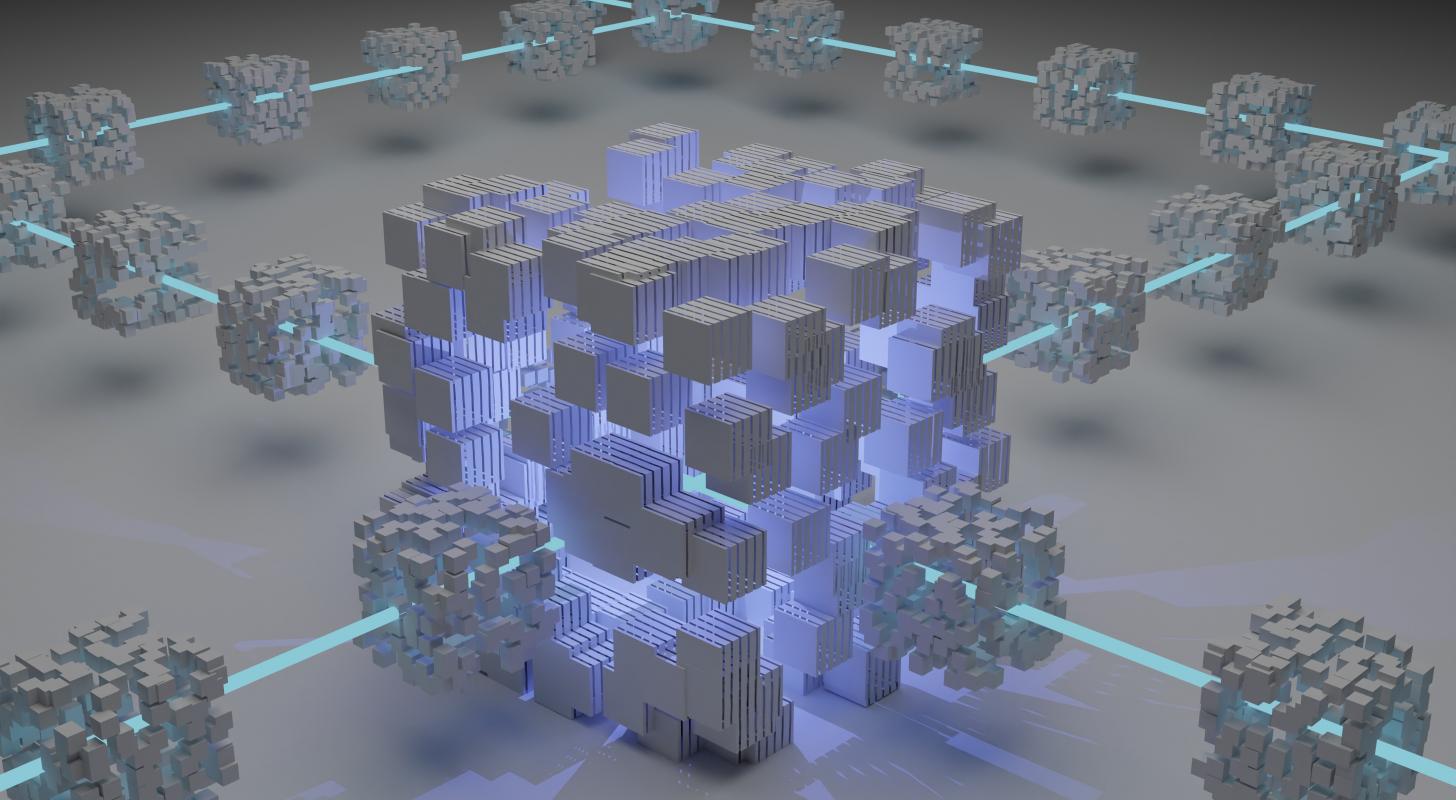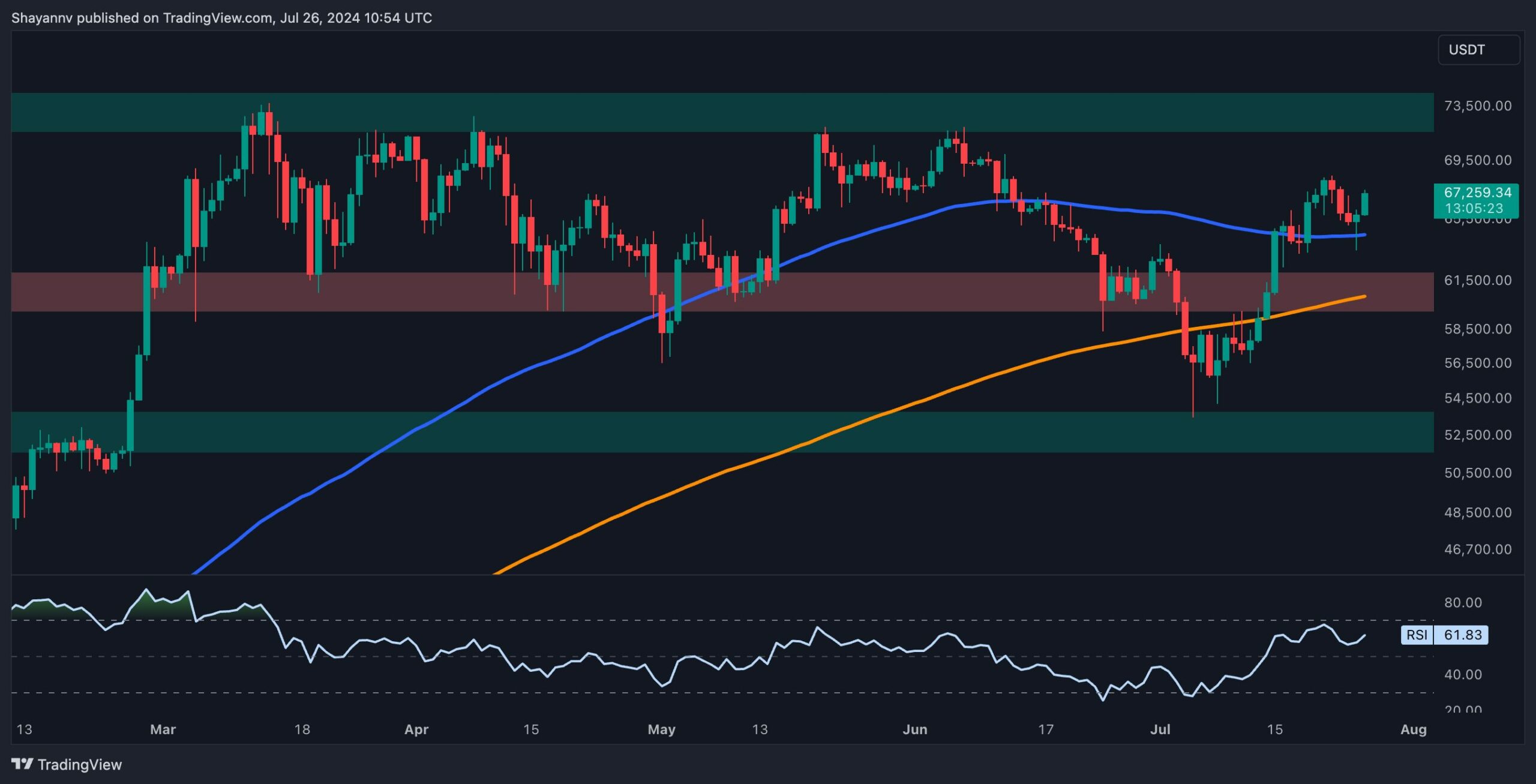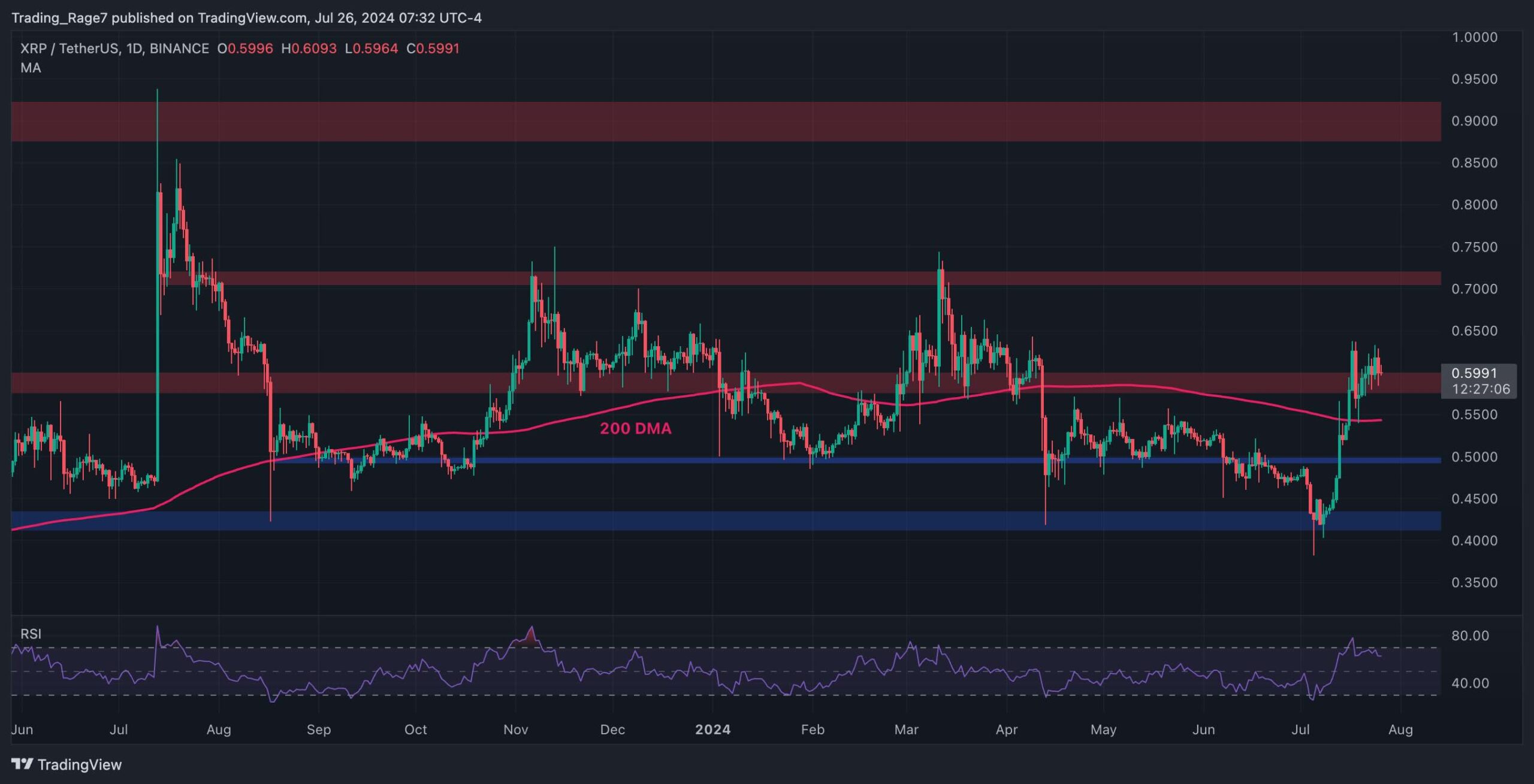Cryptocurrency
What is stacking and how to earn on it?

Stacking is a way of earning passive income from cryptocurrencies based on the Proof-of-Stake (PoS) consensus algorithm and its variants.
The essence of Stacking is to block a certain amount of coins in a wallet to get the right to participate directly or through intermediaries in the maintenance of the blockchain of a given asset and receive compensation for it. Stacking has a similar role in PoS-blockchains as mining in the bitcoin network.
Stacking appears to be a profitable alternative to simply holding cryptocurrencies in a wallet, being analogous to a bank deposit in the crypto industry. Stacking returns vary depending on the blockchain and can be as high as tens of percent per annum or higher.
What is Proof-of-Stake (PoS) and how does it relate to stacking?
Proof-of-Stake is a consensus mechanism in which the right to generate new blocks, verify transactions, and include them in the blockchain according to a certain algorithm is played out between computing nodes based on how much of a given blockchain’s coins they own.
In a basic scenario, a node that owns 1% of all coins in circulation receives the right to process 1% of the blocks, and for its work it receives 1% of all rewards of the network. However, many cryptocurrencies also consider the tenure of coins and other factors. Stacking is getting the very reward for producing new blocks and verifying data with its share (native coins).
How does stacking work in Proof-of-Stake?
In “classic” PoS cryptocurrencies, each official wallet acts as a full node, meaning it verifies and validates transactions and produces new blocks.
Technical requirements differ from one blockchain to another: some networks only need a home computer to deploy and manage a node, while others require professional server hardware. In this way, the blockchain is decentralized and secure without the huge energy costs inherent in Proof-of-Work consensus cryptocurrencies.
The terms of participation in stacking may vary. The general mechanism is to buy the native coin you want to participate in stacking and send it to a smart contract yourself (e.g., through a wallet) or pass it to a validator.
Depending on the speed of coin issuance, stacking yields can reach tens or hundreds of percent. At the same time, it is a way of issuing cryptocurrencies, so too high a rate of reward can lead to coin inflation, which will have a negative impact on profits.
Who are the stacking providers?
Stacking is a popular strategy for investing in digital assets. However, setting up a node or stacking in an individual crypto project can be quite time-consuming.
Therefore, special platforms that provide all-in-one stacking services have become widespread in the cryptocurrency market. They are applications where users can simply send their funds to various pools via the provider’s wallet.
Stacking providers also analyze the current profitability of stacking in the selected network and show other necessary data. Stacking platforms make it as easy as possible for users by charging a small commission on the compensation they receive.
What are the risks of stacking cryptocurrencies?
Stacking appears to be a profitable and relatively safe alternative to simply storing cryptocurrencies in a wallet, promising returns that can be substantial. However, there are a lot of risks that can significantly reduce expected returns and even lead to losses:
- Since stacking participants earn income in coins of a given cryptocurrency, fluctuations in its exchange rate affect the value of invested funds and the actual stacking returns;
- The high stacking yield offered by some PoS-cryptocurrencies (tens and hundreds of percent annually) is achieved due to the high speed of coin issuance. This often leads to a rapid drop in the market price of the coin and a rapid depreciation of the investment in this cryptocurrency;
- Requirements for stackers may include blocking of coins for a period ranging from several days to several months. During this period, the owner cannot withdraw and sell their coins;
- stacking cryptocurrencies using stacking providers carries all the risks associated with trusting a third party, which may be subject to a hacker attack or misappropriate assets collected from stackers.
Cryptocurrency
Bitcoin Price Analysis: Here’s Why BTC Jumped by 5% Today

Bitcoin has recently experienced an uptick in demand near the crucial support region of the 100-day moving average, leading to a notable rebound.
This price action underscores a bullish sentiment in the market with the potential for a continued rally toward a new all-time high.
Technical Analysis
By Shayan
The Daily Chart
A detailed analysis of Bitcoin’s daily chart reveals that following a resurgence of demand near the critical $53K support area, the cryptocurrency initiated an impulsive bullish rally, surpassing several key resistance levels and introducing a bullish sentiment into the market.
These zones include the 200-day moving average at $60.5K, the 100-day moving average at $64.4K, and the static resistance at $61K. After breaking above the 100-day MA, the price recently exhibited a corrective retracement, completing a pullback to the broken level and validating the breakout.
Currently, Bitcoin has faced heightened buying pressure near the 100-day MA and experienced a bullish rebound toward the $67K threshold. If conditions remain stable, there is potential for the bullish trend toward the significant resistance region of $70K in the mid-term to continue.
The 4-Hour Chart
On the 4-hour chart, after receiving sufficient support near the lower boundary of the multi-month wedge at $54K, the price initiated an impulsive bullish rally, reaching the wedge’s upper trendline at $68K.
This price action clearly indicates that buyers are eager to push above the $70K resistance and set a new ATH for Bitcoin in the mid-term. During the recent rally, the price has formed an ascending short-term trendline, serving as the main support for BTC in the short term.
However, Bitcoin faced increased selling pressure near the wedge’s upper boundary, leading to a notable rejection toward the upslope trendline and the $64K support region.
Yet, the cryptocurrency was supported by the trendline and the $64K threshold, initiating a new surge toward the wedge’s upper boundary. Currently, the price is confined by the dynamic support of the ascending trendline and the dynamic resistance of the wedge’s upper boundary, roughly forming a triangle pattern.
A break above the wedge’s upper trendline will pave the way for a renewed bullish surge toward the $70K threshold. Conversely, a break below the ascending trendline could lead to a retracement toward the $64K mark.
On-chain Analysis
By Shayan
While Bitcoin’s price has experienced a notable bullish reversal, a closer examination is essential to determine if this trend will persist.
The Taker Buy/Sell Ratio, a crucial metric for evaluating futures market sentiment, provides valuable insights into the market dynamics. Values above 1 indicate aggressive buying by bulls, while values below 1 suggest bearish selling pressure.
The chart highlights the Taker Buy/Sell Ratio, which has experienced an impulsive surge above the “1” threshold concurrently with Bitcoin’s bullish revival. This surge signifies strong buying interest in the perpetual market, indicating a notable bullish sentiment and significant buying activity. If the upward trend in the Taker Buy/Sell Ratio continues, it confirms a potential mid-term bullish trend, with the price likely rallying toward the $70K mark.
Binance Free $600 (CryptoPotato Exclusive): Use this link to register a new account and receive $600 exclusive welcome offer on Binance (full details).
LIMITED OFFER 2024 at BYDFi Exchange: Up to $2,888 welcome reward, use this link to register and open a 100 USDT-M position for free!
Disclaimer: Information found on CryptoPotato is those of writers quoted. It does not represent the opinions of CryptoPotato on whether to buy, sell, or hold any investments. You are advised to conduct your own research before making any investment decisions. Use provided information at your own risk. See Disclaimer for more information.
Cryptocurrency charts by TradingView.
Cryptocurrency
MEET48 “2024 GIPR2” Voting Event Final Results on August 3rd, Ranking Top on DappBay and DappRadar

[PRESS RELEASE – Singapore, Singapore, July 26th, 2024]
Recently, the “2024 GIPR2” voting event Dapp of MEET48, a metaverse virtual community based on an AI and WEB3.0 diversified UGC entertainment content ecosystem, has rapidly risen in the rankings on DappBay and DappRadar, attracting widespread attention.
The MEET48 “2024 GIPR2” voting event (https://gipr.meet48.xyz/#/gipr) is divided into the Idol Group, Sprout Group, and Virtual Idol Group. Users can log into the MEET48 official website and app, complete tasks and watch contestant videos to earn points, mint NFTs, and use points to buy voting tickets to vote for idols. The final voting rankings will determine the metaverse and overseas offline performance resources that participants will receive. Users who participate in voting interactions will also be whitelisted for future airdrop eligibility.
As of 12PM on July 26, 2024, the MEET48 event Dapp has become the number one social category Dapp on DappBay and ranked fifth in the social category on DappRadar.
According to DappRadar data, MEET48’s event Dapp recorded 25.25 million on-chain transactions in the past 30 days, with 669.98K active user addresses (UAW). In DappBay’s statistics, MEET48’s event Dapp also performed excellently, with 25.62 million on-chain transactions and 647K users in the past 30 days.
Currently, the MEET48 “2024 GIPR2” voting event Dapp has over 3 million registered users, and the total accumulated votes in the event have exceeded 10 million. These users, who joined through the airdrop, will eventually be integrated into MEET48’s intelligent social metaverse community through the MEET48 content ecosystem matrix products.
With the final results of the “2024 GIPR2” voting airdrop event set to be announced on August 3rd, MEET48’s popularity is expected to continue rising. For those who have not yet participated, there is still an opportunity to complete tasks and earn points to join the airdrop event:
https://gipr.meet48.xyz/#/gipr.
About MEET48
MEET48 currently boasts a technical and R&D team of 500 people, covering regional operations in Singapore, Hong Kong, Taipei, Tokyo, Seoul, and Dubai. This makes it one of the largest Web3 application project teams globally. MEET48 aims to achieve the mass adoption of Web3 technology by focusing on an AI UGC content ecosystem centered on AIGC (Animation, IDOL, GAME, and Comics) Gen Z trend entertainment content and a graphical, intelligent metaverse social base.
For more information users can visit MEET48’s: Official Website | Twitter (X) | Telegram | Discord
Binance Free $600 (CryptoPotato Exclusive): Use this link to register a new account and receive $600 exclusive welcome offer on Binance (full details).
LIMITED OFFER 2024 at BYDFi Exchange: Up to $2,888 welcome reward, use this link to register and open a 100 USDT-M position for free!
Cryptocurrency
Ripple Price Analysis: Is XRP Ready to Finally Explode Above $0.60?

Ripple’s price is finally gaining some bullish momentum following months of downtrend and consolidation.
By TradingRage
The USDT Paired Chart
Analyzing the XRP/USDT pair, it is evident that the price has demonstrated a rapid recovery from the $0.43 support level. It broke above both the $0.5 level and the 200-day moving average, located around the $0.55 mark.
The price is currently on the verge of breaking above the $0.59 resistance zone and if it succeeds, a rally higher toward the key $0.72 resistance level would be probable in the coming weeks.
The BTC Paired Chart
The BTC paired chart also displays a similar behavior. The market has rebounded and broken above the 800 SAT level. Yet, the price has yet to break through the 200-day moving average, located around the 900 SAT mark.
Typically, a rise above the 200-day moving average indicates the beginning of a new uptrend. Therefore, if a breakout occurs, XRP will likely significantly appreciate against BTC in the short term.
Binance Free $600 (CryptoPotato Exclusive): Use this link to register a new account and receive $600 exclusive welcome offer on Binance (full details).
LIMITED OFFER 2024 at BYDFi Exchange: Up to $2,888 welcome reward, use this link to register and open a 100 USDT-M position for free!
Disclaimer: Information found on CryptoPotato is those of writers quoted. It does not represent the opinions of CryptoPotato on whether to buy, sell, or hold any investments. You are advised to conduct your own research before making any investment decisions. Use provided information at your own risk. See Disclaimer for more information.
Cryptocurrency charts by TradingView.

 Forex2 years ago
Forex2 years agoForex Today: the dollar is gaining strength amid gloomy sentiment at the start of the Fed’s week

 Forex2 years ago
Forex2 years agoHow is the Australian dollar doing today?

 Forex2 years ago
Forex2 years agoUnbiased review of Pocket Option broker

 Forex2 years ago
Forex2 years agoDollar to pound sterling exchange rate today: Pound plummeted to its lowest since 1985

 Cryptocurrency2 years ago
Cryptocurrency2 years agoWhat happened in the crypto market – current events today

 World2 years ago
World2 years agoWhy are modern video games an art form?

 Stock Markets2 years ago
Stock Markets2 years agoMorgan Stanley: bear market rally to continue

 Economy2 years ago
Economy2 years agoCrude oil tankers double in price due to EU anti-Russian sanctions































